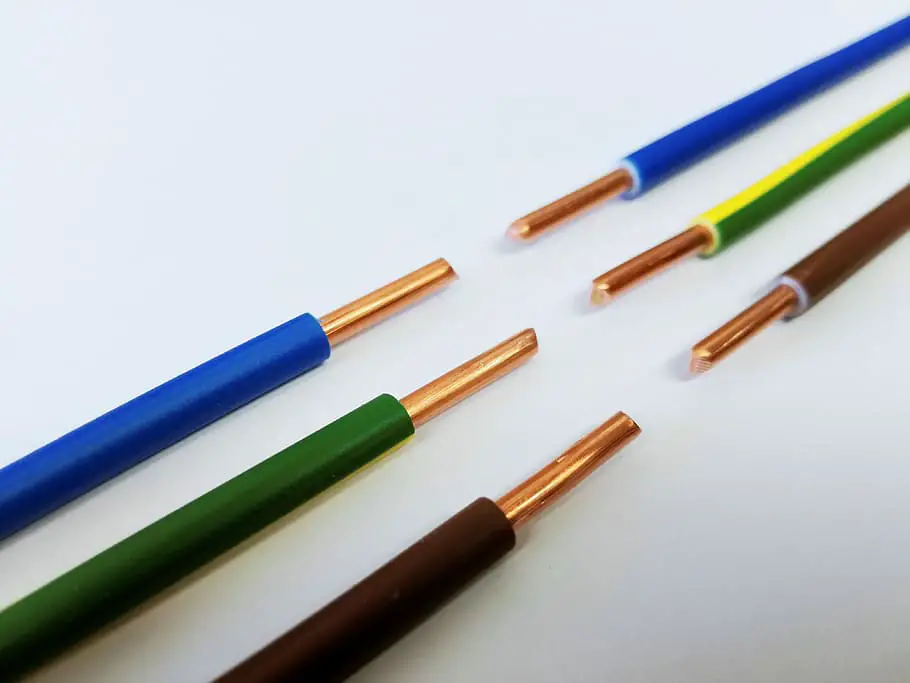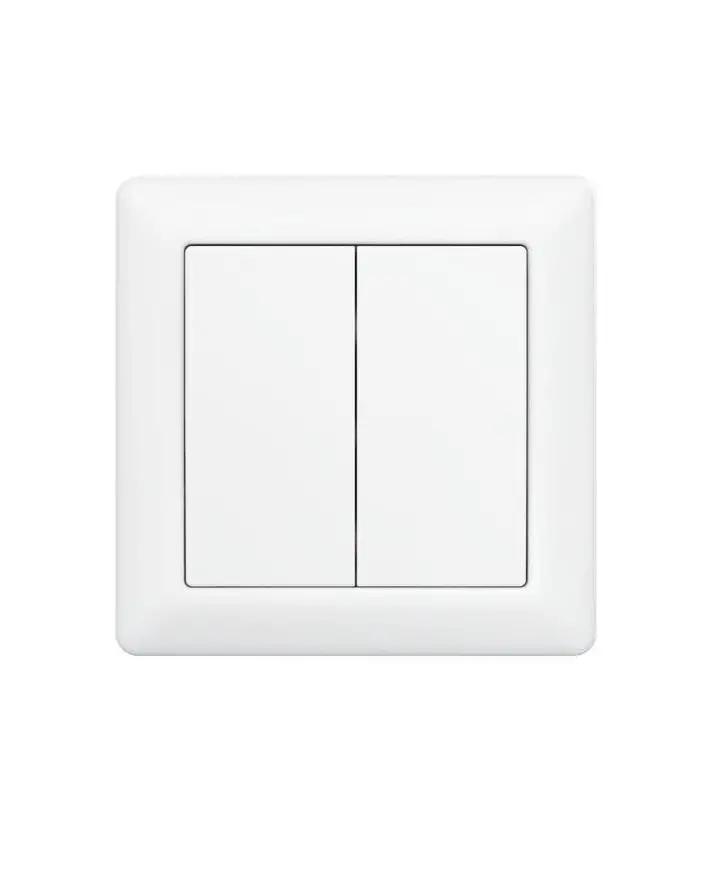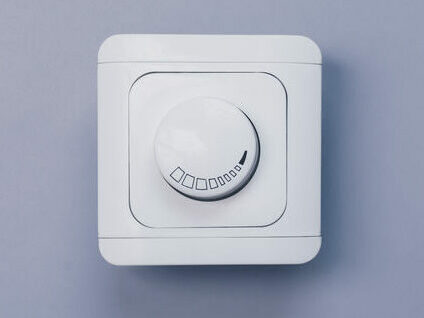How Two-Way Light Switching Works & How To Wire It
Two-way light switching is when two separate light switches are able to control the same luminaires. This allows for a function in which any given luminaire can be turned on and off from two different locations.
This is why it has been given the name “two-way “ switching because it is able to be switched from 2 separate ways.
How Does Two-Way Light Switching Work?
Two-way light switching works by having two wires in between the two different switches. What these two wires do is that they act as an alternate bridge point between the switches that allow them to connect the circuit to the light source from either switch.
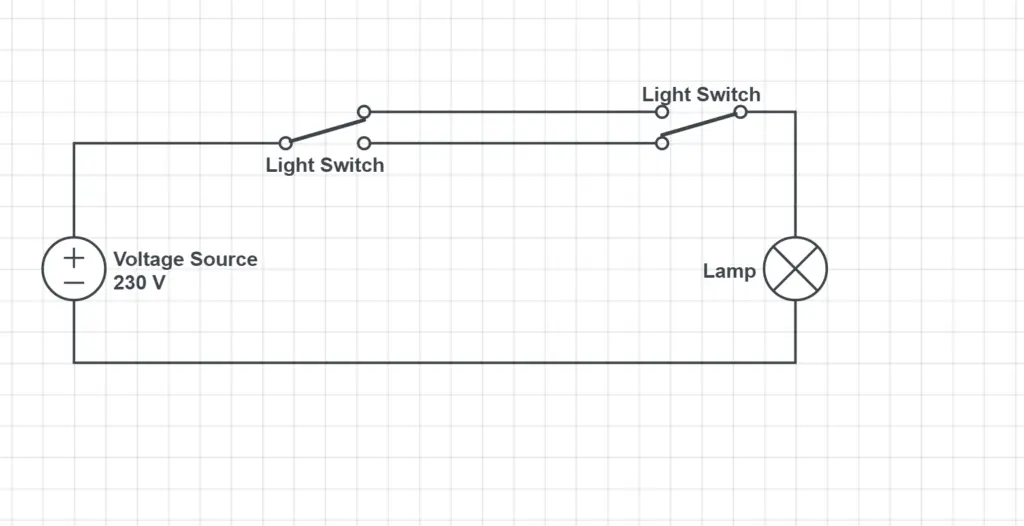
As can be seen through the image above the light switches are each connected to 2 wires that connect to the light switches’ phase input. What this does is that it creates the desired effect of being able to turn the lighting on and off from either switch.
In the state of the image, the lamp is turned off, which is because the circuit is not currently connected. This can however be changed by switching either of the switches due to the principle of two-way switching.
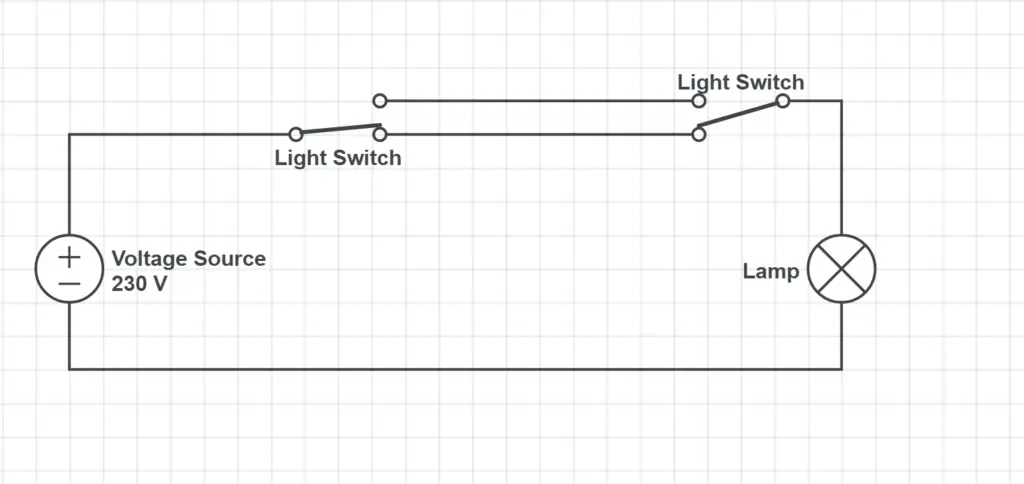
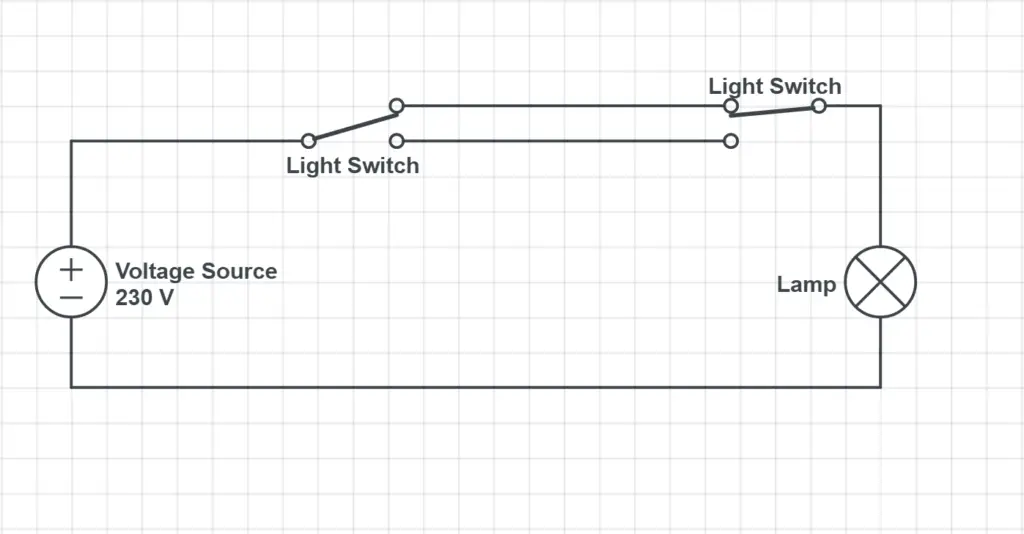
In both of these images above we have flipped one of the two switches from the original image where the circuit never connected and the lamp was off. In theory, that means that the circuits on both of the images should be connected and power the lamp, which they are.
This also means that in this state you should be able to turn the lighting off by turning the unflipped switch, which you can since flipping that switch in either example break the circuit and therefore make the lamp turn off.
If that switch is flipped the circuit looks like it did on the first image again, where the switches don’t connect with each other. This creates a way in which you can flip either switch infinitely and still have the original function remaining.
Applications Of Two Way Switching
The applications of two-way switching are many due to the way they make light control accessible from multiple locations.
Some of the places these switches are useful for are:
At the top and bottom of a staircase.
At 2 ends of a long corridor.
Large rooms with 2 or more entrances/exits.
It works well in all of these locations since it makes it easier for the user to toggle the lighting without having to walk long distances.
In certain cases such as the staircase scenario, it also becomes a safety measure. If you are at the top of the staircase without the option to turn the lighting on you run a larger risk of falling due to insufficient lighting.
How To Wire A Two Way Light Switch
The way you wire a two-way light switch system is the same way the diagram describes. Here is a step-by-step guide on how the wiring of this should look like:
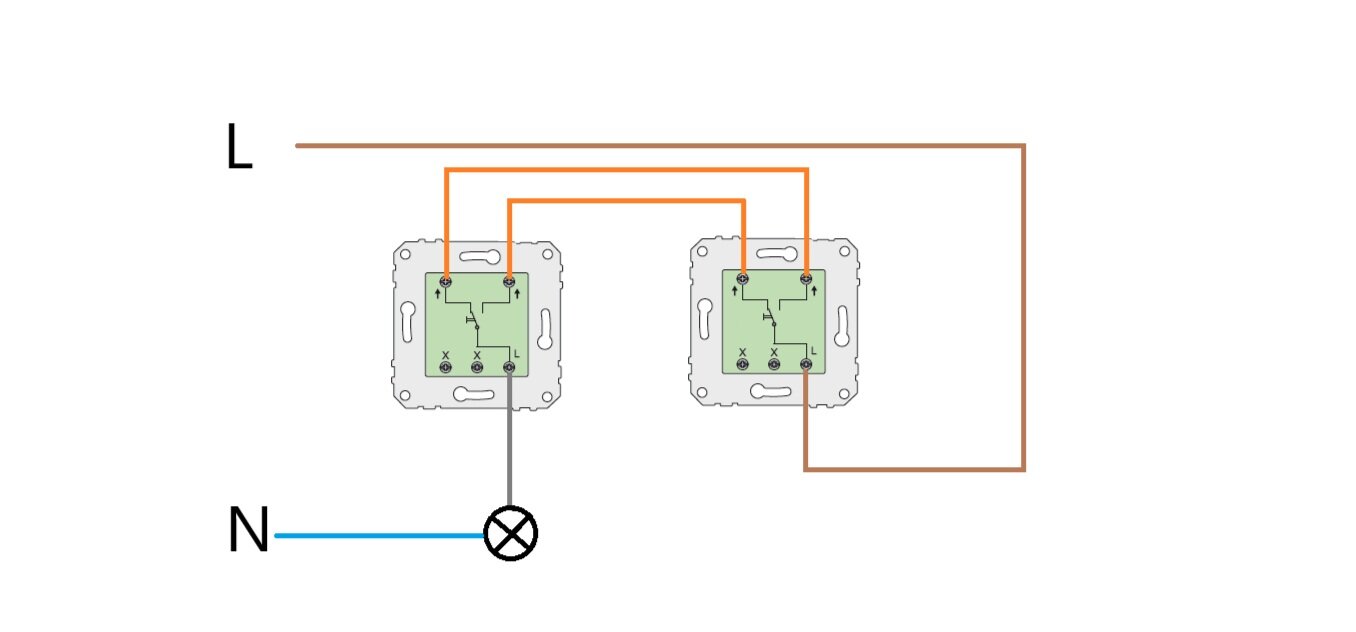
Connect the incoming phase wire to the input “L“ slot on the switch. In most countries this wire is brown but it is also possible for it to be black or grey.
Connect the switches to each other using two separate intermediate wires. In order to not cause unnecessary confusion in the junction box it is a good idea to use a different colour for these than the phase wires. A common choice for this is to use orange wires. The order these wires are connected does not matter as long as both wires from switch A connects to both input/output spots on switch B.
Connect the final output slot from the last switch in the circuit to the lighting. This wire can be any colour that would indicate that this is a live wire, which in most cases would be black or grey. However, a white wire is also a good choice here since white is usually used to indicate a wire that goes directly from a switch to a lamp.
Connect the lighting to the neutral line and to any potential earth.
Make sure everything is safely connected and conduct a test to see if the wiring is working.
NOTE: A two-way switch circuit will only work if the switches have 2 output slots that it alternates between. If the switch is only a single wire breaker then it needs to be changed to a switch with 2 alternating outputs.
If these steps are followed correctly you are likely to have a fully functional two-way light switch system set up.
Adding More Switches
In certain scenarios where there are more than two entrances to an area, it is possible that you might want to have the option to toggle the lighting from more than just two locations. This would require us to add one or more to the circuit.
The only problem with this is that with the way the circuit is constructed it is impossible to do so using the same switches as before. This is because each of the switches acts as a circuit opener and a circuit closer, meaning that there is no way to add another switch and still have the concept function.
This problem can however be solved by using a different type of switch that can be added in between the 2 already existing switches.
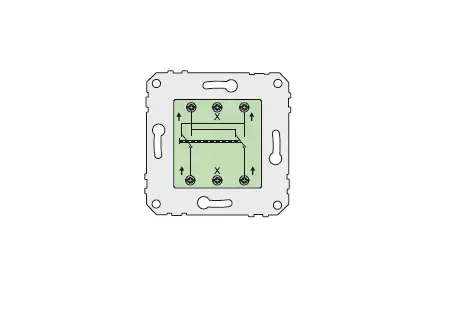
This switch is called a cross switch, due to the way it takes multiple inputs and crosses them to multiple outputs.
This switch is connected by taking both inputs from one of the switches and sending two outputs that connect to the second switch just like in the pictures before.
The way it works is that it takes both of the inputs it receives and puts them each to an alternating switch. However, it does it differently from any other switch since the alternating switches connect to each other but offset.
This means that the individual switches will never have contact with each other at any given time but will still have the ability to connect the circuit. This means that as long as the two individual switches in the switch work in unison and are wired correctly this switch can be successfully added in between the already existing switches and work seamlessly.
This switch can be added infinitely into the circuit. However, after adding one or two of these into the circuit it starts to become rather overwhelming in the junction box they are wired in. In cases where you require 4 or more switches, it might be preferable to switch the system used completely.
Modern Way Of Doing Multiple Switch Lighting
A more modern way of doing systems of multiple light switches is by making use of a DALI system. DALI stands for Digital Addressable Lighting Interface and is a controlling protocol for lighting.
What it does is that it gives each connected luminaire, sensors, and switches their own digital address, meaning that it can be controlled individually through its address if desired.
Since each unit connected to the same DALI bus has its own unique address or ID it means that we can program them for different functions. This implies that it is possible to simply program several different switches to have the same function instead of having to create functions physically using specific wire combinations.
This can be even further improved upon by making use of Enocean switches. Enocean is a company that invented and patented the concept and construction of a wireless light switch that sends control signals using the power generated by the push of the switch itself.
These Enocean switches work by taking the power generated from the push and sending a signal using this power to a signal-receiving unit mounted in the ceiling. This signal-receiving unit can be connected to multiple different switches and can distinguish between them.
Since the Enocean technology can be seamlessly used together with the DALI protocol this means that they can all individually be programmed for different functions even though there is only the signal-receiving unit that is physically connected to the system.
This also means that we can completely avoid using wires altogether for the switches and avoid the possible chaos in the junction box.

